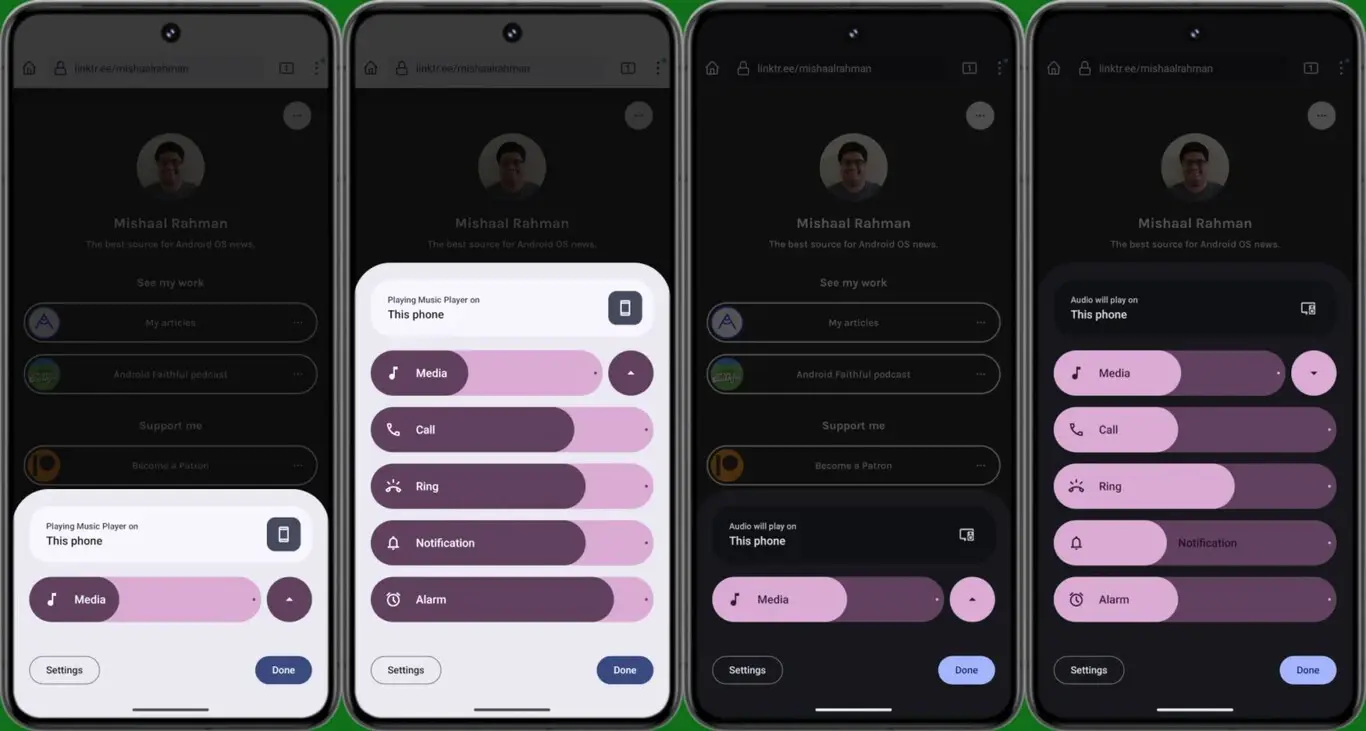Android’s Material You design language, introduced in Android 12, has significantly enhanced the visual experience for users. Since then, Google has continuously refined this design philosophy with subtle yet impactful changes across various UI elements. With the upcoming Android 15, a major overhaul is expected for the system volume control panel, bringing a complete aesthetic and functional revamp.
Android 15 Poised to Revamp the Volume Control Panel with a Material You Makeover

Let’s take a closer look at the current volume control panel. Accessible by pressing the volume buttons and tapping the three-dot menu, it offers five individual sliders for media, call, ringer, notification, and alarm volumes. Additional buttons are present to access sound and vibration settings and dismiss the panel. Notably, if media playback is active, a media output switcher appears below the volume slider.
However, this current design shares significant similarities with the functionalities found within the “Settings” > “Sound and vibration” menu (nomenclature may vary depending on the manufacturer). This redundancy stems from changes introduced with Android 9 Pie.
Gizchina News of the week
Unveiling a More Streamlined and Visually Appealing Volume Panel
The new volume control panel user interface, discovered and reported on by Mishaal Rahman for Android Authority, is currently present in the Android 15 Developer Preview 2 but remains disabled by default. Visually, the differences from the existing panel are quite striking.
The most prominent change lies in the sliders themselves. They transform from the current thin design to thicker, pill-shaped elements. Additionally, each slider displays a dot at its end, signifying the maximum volume level. For convenient muting of individual streams, simply tapping the corresponding icon is now sufficient.
Another key change involves the removal of the “Sound and vibration” header. In its place, a permanent media output shortcut resides, a feature previously only available during active media playback. This offers users a quick way to identify the current audio output device, regardless of playback status.
Further enhancing the user experience, Google has incorporated subtle animations within the panel. As the volume level is adjusted, the name of the media playing dynamically moves alongside the slider.
Beyond the visual refresh, the revamped volume control panel hints at potentially including additional controls for advanced audio features like spatial audio or noise cancellation.
While currently disabled, it’s highly probable that Google will activate this new interface in future updates leading to the official Android 15 release. However, it’s important to remember that this is still a developmental feature, and aspects may change or be entirely removed before the final public rollout.





